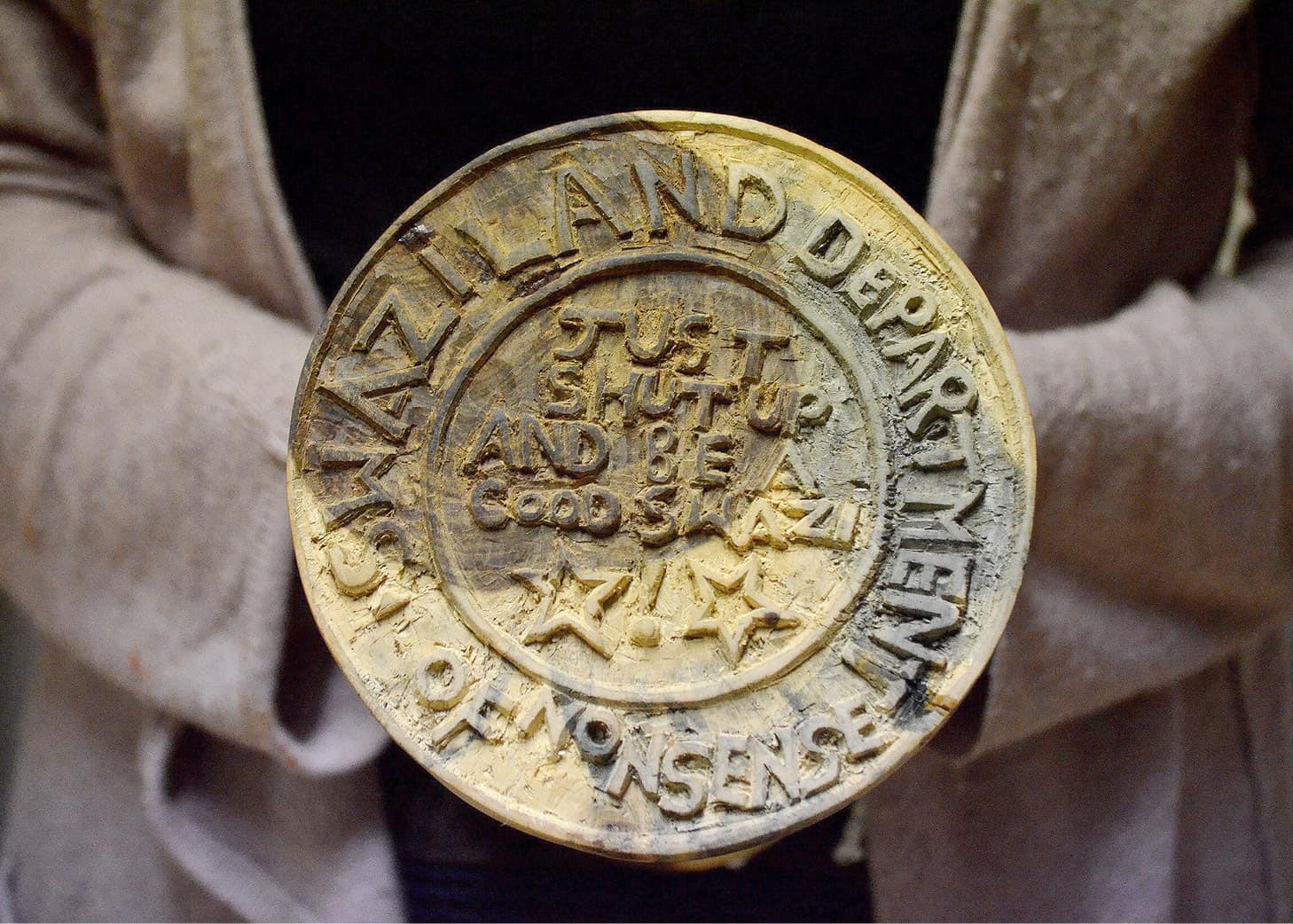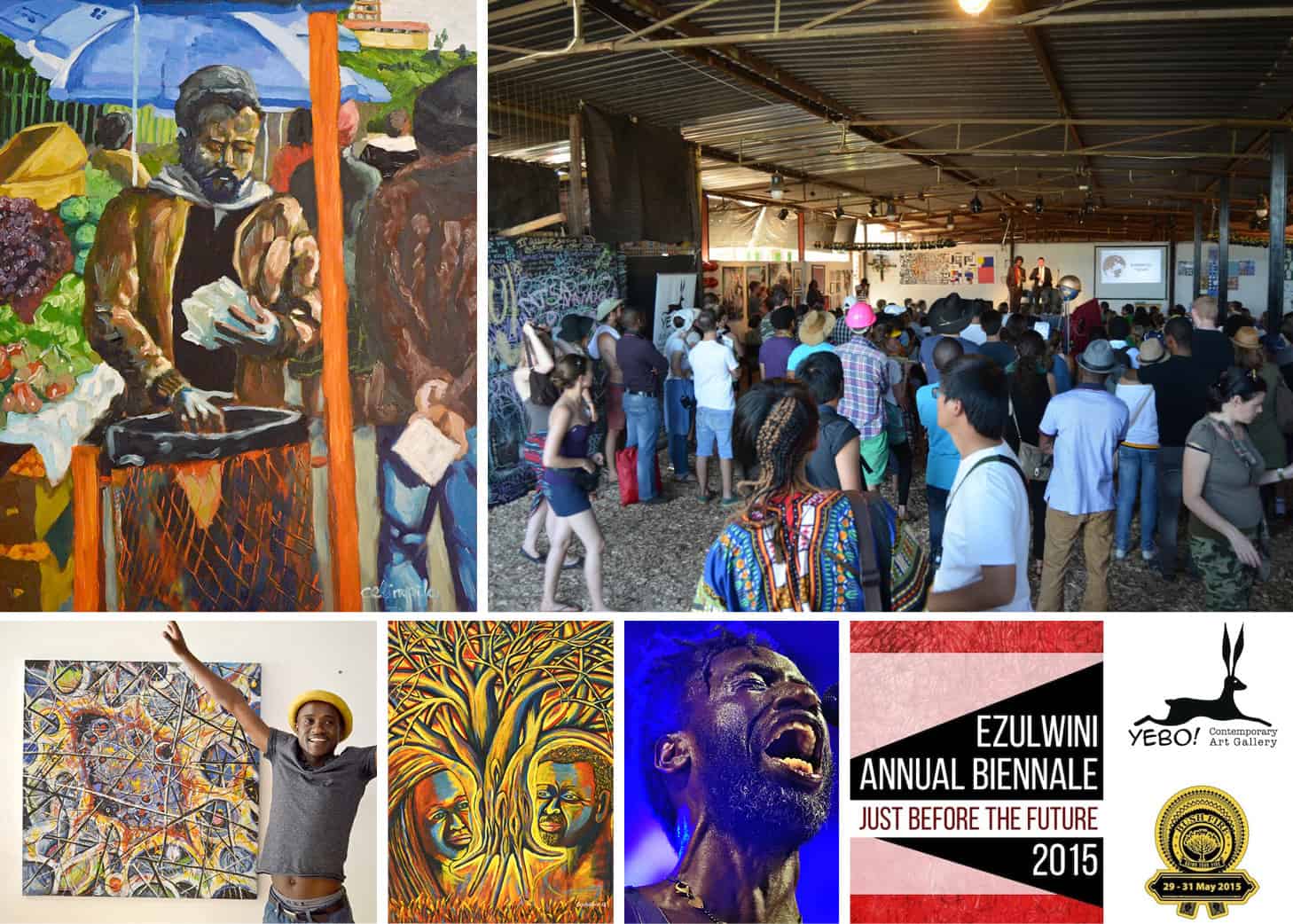The Ezulwini Annual Biennale is an annual contemporary art event in Swaziland, and is curated by Yebo! Gallery, Swaziland’s first contemporary art gallery, showcasing and promoting local art, design & creative expression. This year’s Biennale opens on Friday 29 May at the 2015 MTN Bushfire festival in The Barn (an interactive art, dialogue and activation space) and runs till Sunday evening, showcasing work by 30 artists. In an interview with Aleta Armstrong of Yebo! and Mbongeni Dlamini, coordinator of The Barn, we find out more about Ezulwini and MTN Bushfire, and how these platforms facilitate creativity, expression and conversation, and aim to ignite a collective response for positive change in Swaziland.
All Barn activities fall within the theme for 2015, ‘Just before the future,’ which looks at the future of a modernising and globalising Swaziland from two main standpoints: environment and development, and the arts and development.
 ABOVE: Khulekani Msweli/Anthony Muianga, Swaziland Department of Nonsense Stamp and ink box. Sandalwood, jacaranda, brass. Image courtesy of Yebo! Swaziland.
ABOVE: Khulekani Msweli/Anthony Muianga, Swaziland Department of Nonsense Stamp and ink box. Sandalwood, jacaranda, brass. Image courtesy of Yebo! Swaziland.
Hi Aleta and Mbongeni! In your opinion, what is the role of the artist in Swaziland?
Aleta Armstrong: I think Cesar A. Cruz says it best; “to comfort the disturbed, and to disturb the comfortable.”
Mbongeni Dlamini: I feel that the role of the artist is as flexible as the artists themselves are. I do believe that the artist occupies a position that affords a certain freedom. This is the freedom to define one’s own way of interrogating social issues, and indeed to interrogate them.
Swaziland is particular in many ways, and provides a mass of inspiration and options to artists who are interested. The role of the artist in Swaziland is to express their views and understandings of the country and the world so as to assist in the defining and formalization of the industry.
What are your wishes for the future of Swaziland?
AA: We have the opportunity and potential to be a truly amazing country. We need to listen to each other’s opinions and to experts who can give us advice on all sectors, and follow this with an action plan that is implemented. I’d like to see more people thinking out of the box and coming up with innovative and creative solutions for our country’s challenges. I would like to see a future where women and children are no longer abused but respected and included in decision-making and plans for the future.
MD: Swaziland develops by the day; new plots of land being khonta-ed, new housing developments, airports, new governmental departments etc. It is my wish that we continue to develop, but with a consciousness and a care for our environment. By that I mean people, plants, places etc. I hope that we could approach our future with consciousness, transparency, concern and balance, developing not only the infrastructure and economy, but our social values, our environmental land usage and our culture as well.
Please tell us a bit more about The Ezulwini Annual Biennale.
AA: I read about the Art Biennales happening in Venice and Miami and thought, “It’d be nice if Swazi artists could one day participate in these events.” But obviously nobody was calling us. And it would cost millions that none of us have to get us there. So then the natural conclusion was, “Why not just create our own Biennale?” (But lets not forget that 76 Swazi artists are represented as part of the Imago Mundi project in a book and at the Venice Biennale)
MD: The Venice Biennale is a very successful and prestigious international art fair, one that very few Swazis have had the privilege of attending. We thought it was about time to start up our own, except we’d host it every year. Perhaps we might get an invitation to Venice one day…
What are your concerns for the visual arts in Swaziland?
AA: My greatest concern is that society and the media praise mediocre work. That artist’s original and creative thoughts and expressions get stifled either by themselves or by society.
MD: The visual arts in Swaziland occupy an interesting position. Artists have the space to present ideas, methods and questions that are new to Swaziland. I am concerned by the number of artists producing according to a perceived market as opposed to a genuine creative urge. I hope that Swazi artists can find a market and maintain integrity.
I find myself most concerned by the pressure put on artists to conform to certain parameters that are defined by people in positions of power that often have no understanding of the arts. I worry that current trends in development will be seriously detrimental to the arts.
How do local artists benefit from events such as MTN Bushfire?
AA: It’s a fantastic platform and opportunity to interact with a huge international audience!
MD: MTN Bushfire is one of the few events that bring a large foreign audience into contact with local cultural production. This fosters cross cultural exchange and dialogue, presenting artists with market, network and collaborative opportunities.

CLOCKWISE FROM TOP LEFT: Celimpilo Dlamini, Junk Food, 75 x 60 cm, oil on canvas ; The Barn at MTN Bushfire 2014; photograph of Saul Williams by Iain Pearson; Sunshine Nxumalo, It’s up to us to change what we can, 44 x 60 cm, acrylic on canvas; one of the artists with his work. Images courtesy of Yebo! Swaziland.



